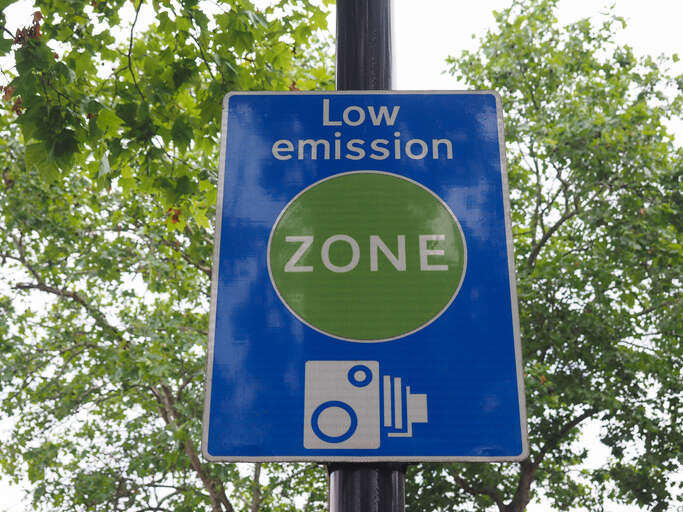
New research by the Clean Cities Campaign tracked the development of low-emission zones (LEZs) across the EU-27, UK and Norway, to see which parts of the continent are on track to meet their environmental commitments in the coming decade.

How many low-emission zones are there?
Overall, there are currently 320 LEZs in Europe, an increase of 40% from 2019. Based on current commitments, it is projected there will be 507 LEZs by 2025, a further increase of 58% in the coming three years.
“The numbers are clear: there's been a strong and steady growth of LEZs in Europe since 2019,” says Barbara Stoll, director of the Clean Cities Campaign. “We see that there's an unstoppable wave of LEZs that is currently spreading across Europe, which is a good thing for air quality, and it's probably going to last.”
Over half of all LEZs currently in Europe are in Italy, which has implemented the zones in more than 170 locations, an increase of 75.5% compared with three years ago. Germany follows with 78 LEZs, which is actually slightly lower than in 2019, and both countries have committed to no further LEZs in the next three years.
On the other hand, Spain and France have both committed to ambitious LEZ development plans by 2025. Spain currently only has three LEZs, but is projected to have 149 by 2025, while France has pledged to have 42 by 2025, up from eight currently. This, Stoll explains, is due to new national laws making LEZs compulsory in cities, propelled by the success of LEZs in Paris, Barcelona and Madrid.
Do low-emission zones work?
Numerous studies have demonstrated the effectiveness of LEZs in significantly reducing nitrogen dioxide and fine particulate air pollution, as well as potentially reducing congestion and overall traffic emissions.
Research by the Mayor of London found that the introduction of the ULEZ in 2019 reduced the number of polluting cars in central London by 13,500 a day, and roadside nitrogen dioxide decreased by around 30%.
[Read more: Leuven’s journey to becoming carbon-neutral]
Although the number is falling, there were still over 300,000 premature deaths a year recorded, as of 2019, in Europe that were attributed to PM2.5, the fine particulate matter produced by vehicle engines that can cause asthma, heart disease and cancer. The number of deaths has fallen by over a third since 2005 and is on track to meet its 2030 targets.
Many cities are taking further action by introducing zero-emission zones (ZEZs). By 2025, the UK is expected to have at least three ZEZs, one for all vehicles in central London, one across Hackney and Islington boroughs, and one in Oxford.
Cities in Denmark, Norway and France have all committed to ZEZs in the coming decade, while the Netherlands has the most radical developments, with three full ZEZs and a further 28 cities committed to ZEZs for delivery vehicles.
But in many cities, their plans may not be enough to meet their climate targets. The Clean Cities Analysis finds that, of the European cities that have been selected for the EU Mission for Climate-Neutral and Smart Cities, which aims to be climate-neutral by 2030, less than half currently operate LEZs, and only ten have a plan to introduce ZEZs.
Stoll says the Ambient Air Quality Directive played a significant role in setting standards for air pollution and has allowed the EU to provide more targeted funding and support. But, he adds, it is important that cities think more broadly than just the LEZ itself. LEZs and ZEZs are most successful when coupled with strong investment in public transport, cycle lanes and green spaces.
“The first step would obviously be to clean up the air because it's an utterly silent killer,” Stoll says. “But of course, the ultimate objective should be to make cities more liveable and you won't be able to achieve that just by ramping up low-emission zones in Europe. You have to come up with broader and more comprehensive solutions.”
[Read more: So what’s with all these new planned cities?]






